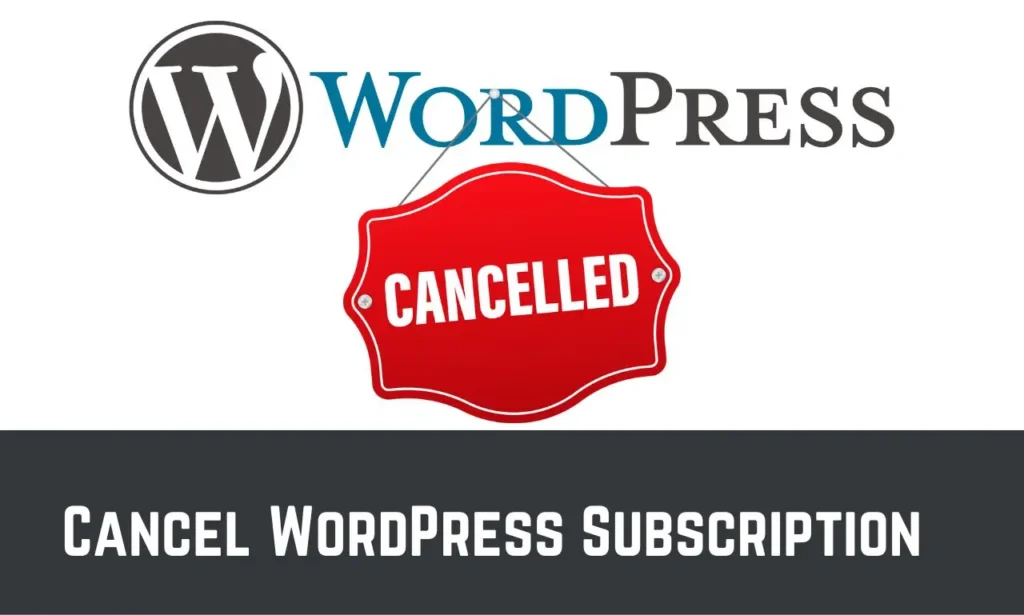WordPress has been a crucial platform for people and businesses to share their ideas online. But sometimes, circumstances change, and you may need to cancel your subscription. In this comprehensive guide, we’ll walk you through the step-by-step process of how to cancel WordPress subscription.
We’ll also explore pre-cancellation considerations, what happens after you cancel, alternatives to cancellation, and offer tips for a seamless experience. By the end of this article, you’ll be well-equipped to make an informed decision and navigate the cancellation process with confidence. Let’s get started on this journey of website management and decision-making.
However, circumstances can change, goals can evolve, and budgets can shift. At some point, you may find yourself needing to cancel your WordPress subscription. This decision could be driven by various reasons – perhaps you’re looking to switch to a different platform, scale down your online presence, or simply reevaluate your digital strategy.
Pre-Cancellation Considerations
Before proceeding with canceling your WordPress subscription, there are a number of key considerations and preparations you should keep in mind. Making informed decisions while reducing potential complications along the way.
A. Review Your Subscription Details
- Identify the Type of Subscription: Begin by understanding what type of WordPress subscription you currently have. Is it WordPress.com, WordPress Premium, Business, or another variation? Knowing your subscription type is crucial as it will affect the cancellation process and the features you’ll lose access to.
- Note the Billing Cycle and Renewal Date: Determine when your subscription renews and how frequently you are billed. This information is important as it will help you avoid any unexpected charges if you decide to cancel.
- Verify the Payment Method on File: Ensure that the payment method associated with your WordPress subscription is up to date. If you’re using an outdated or expired payment method, update it before proceeding with the cancellation.
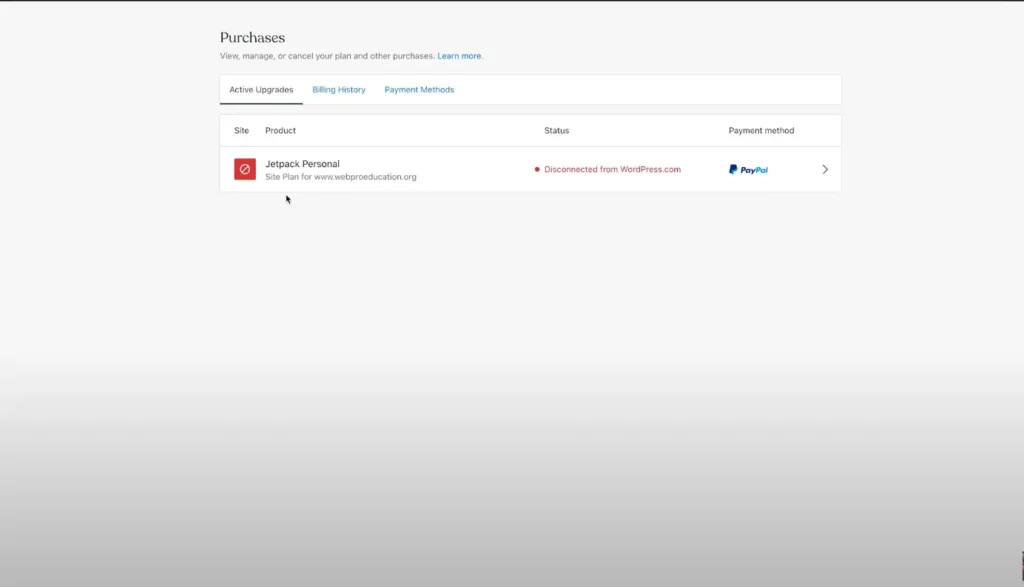
B. Back Up Your Website
- Importance of Backing Up Before Cancellation: Before making any changes to your subscription, it’s crucial to backup your website. This precautionary step ensures that you have a copy of your website’s content and data, which can be invaluable in case you want to re-establish your online presence elsewhere.
- Step-by-Step Guide to Creating a Backup: Provide detailed instructions on how to back up your website. This may involve using plugins, exporting your content, or utilizing the backup features provided by your hosting service.
C. Export Your Content (If Necessary)
- Exporting Blog Posts, Pages, Media, and Comments: Depending on your future plans, you may want to export your content, including blog posts, pages, images, videos, and comments. This export will allow you to retain your content and easily migrate it to a different platform if needed.
- Saving Your Content for Future Use: Explain the importance of saving the exported content in a safe location, preferably on your local device or cloud storage. This ensures that you don’t lose any critical data during the transition process.
By carefully considering and acting upon these pre-cancellation considerations, you’ll be better equipped to navigate the WordPress subscription cancellation process while protecting both your content and financial interests.
Steps: How to Cancel WordPress Subscription
Once you have reviewed and taken steps to protect the details of your subscription, it’s time to initiate the cancellation process. Here is a step-by-step guide on how to cancel a WordPress subscription:
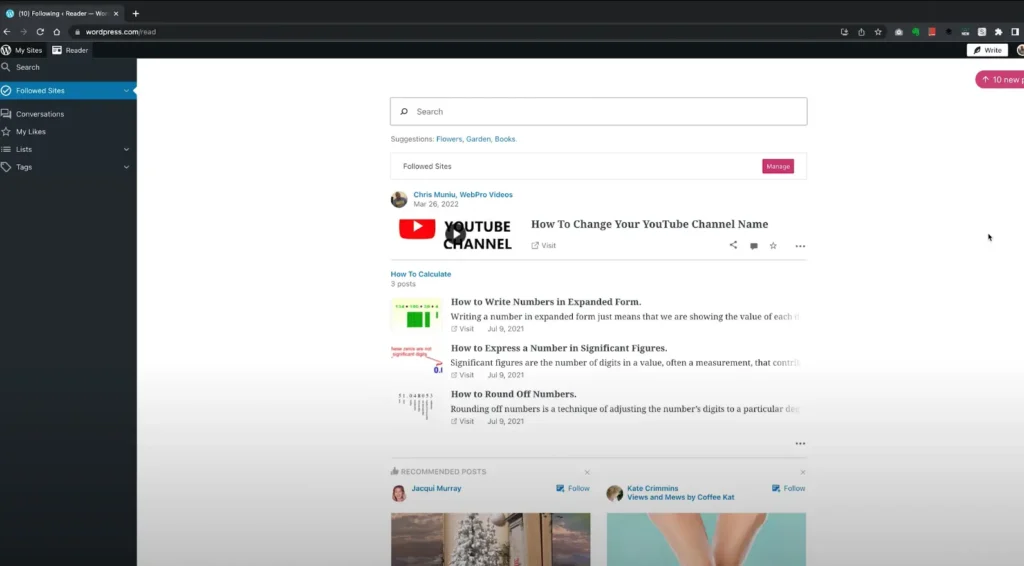
A. Access Your WordPress Account
- Log In: Begin by logging into your WordPress account using your username and password. Make sure you’re using the credentials associated with the subscription you wish to cancel.
B. Navigate to the Subscription Management Page
- Locate the Dashboard: After logging in, you’ll be directed to your WordPress dashboard.
- Find Subscription Settings: Look for the subscription settings or management section. The location may vary depending on your subscription type, but it’s typically found in the account settings, billing, or subscription tab.
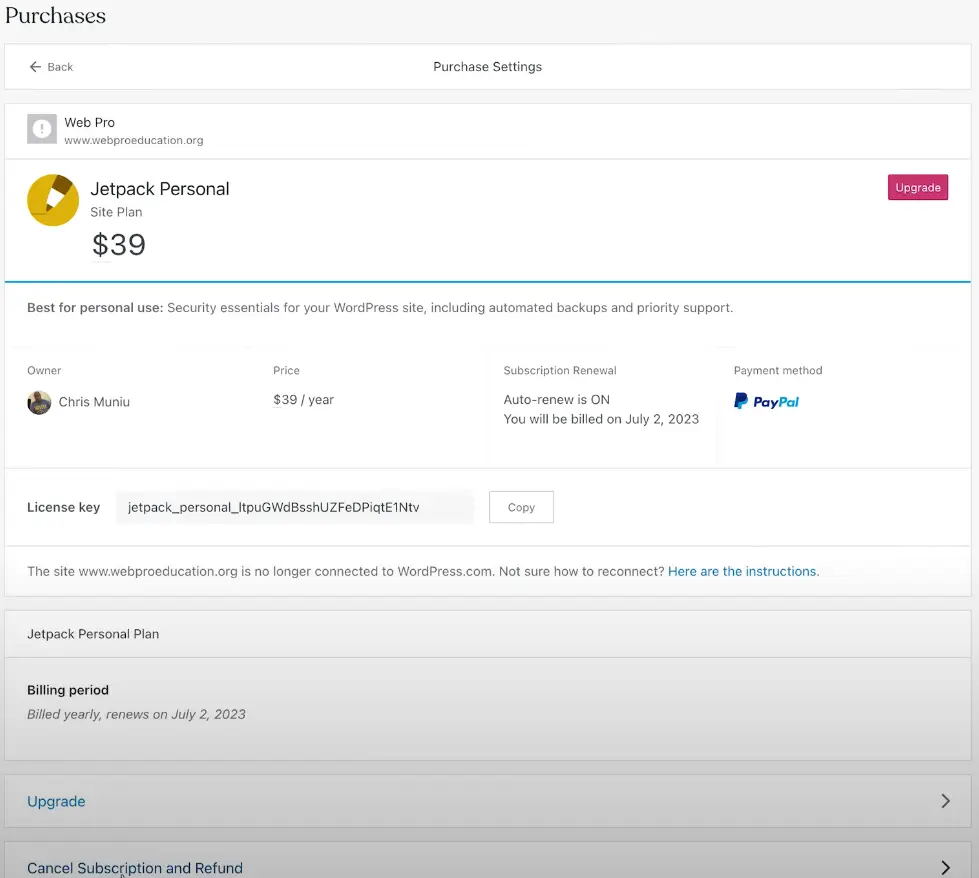
C. Review Your Subscription Details
- Confirm the Subscription: In the subscription management section, you’ll see a list of your active subscriptions. Carefully review these details to ensure you’re canceling the correct subscription.
D. Initiate the Cancellation Process
- Click on the Cancellation Option: Once you’ve identified the subscription you want to cancel, click on the cancellation or “cancel subscription” option. WordPress may offer this option as a button or a hyperlink.
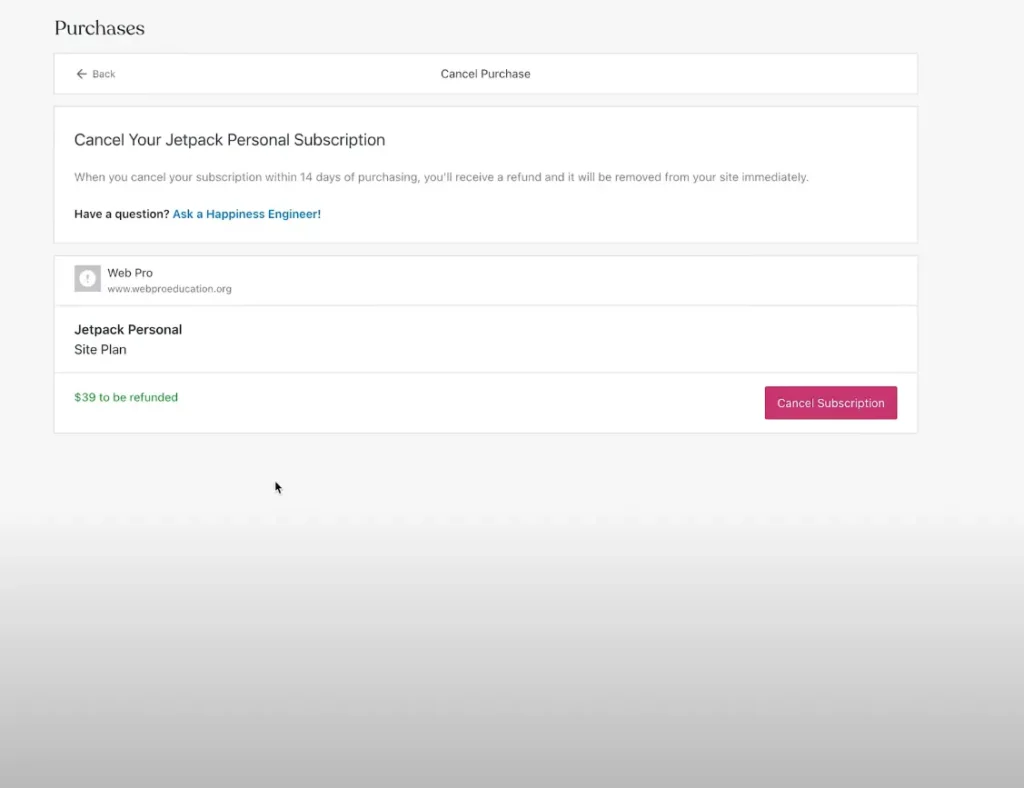
E. Provide a Reason for Cancellation (Optional)
- Choosing from Predefined Options: When canceling your WordPress subscription, you may be asked to provide feedback for improvement. This can include predefined options such as cost or features.
- Providing Additional Information: Some platforms may offer a comment box where you can provide more specific feedback about your cancellation decision. Feel free to share your thoughts if you wish.
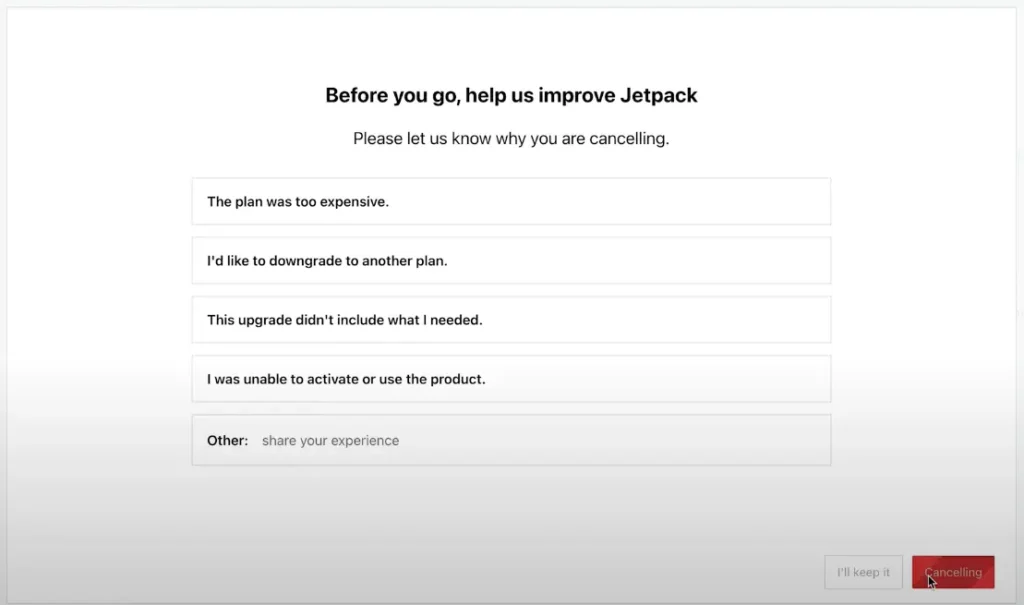
F. Confirm the Cancellation
- Double-Check Your Decision: Before proceeding, take a moment to double-check that you’re canceling the correct subscription. Ensure that all the details are accurate.
G. Follow Any Additional Prompts or Instructions
- Addressing Follow-Up Questions or Offers: WordPress may present additional offers or options before finalizing your cancellation. Carefully consider each one before making your decisions accordingly if canceling is indeed desired. Otherwise, proceed as directed.
- Confirmation Screen: Once your subscription has been successfully cancelled, a confirmation screen or message should appear to acknowledge its receipt.
By following these steps, you will be able to cancel your WordPress subscription with no unexpected consequences or delays. Pay close attention when going through this process so as to ensure you cancel the appropriate subscription and don’t incur unexpected charges as part of this action.
What Happens After Cancellation?
Once you’ve successfully cancelled your WordPress subscription, a number of changes and processes will take place post-cancellation. Being aware of what they entail can help ensure a smooth transition. Here’s what to expect after cancellation:
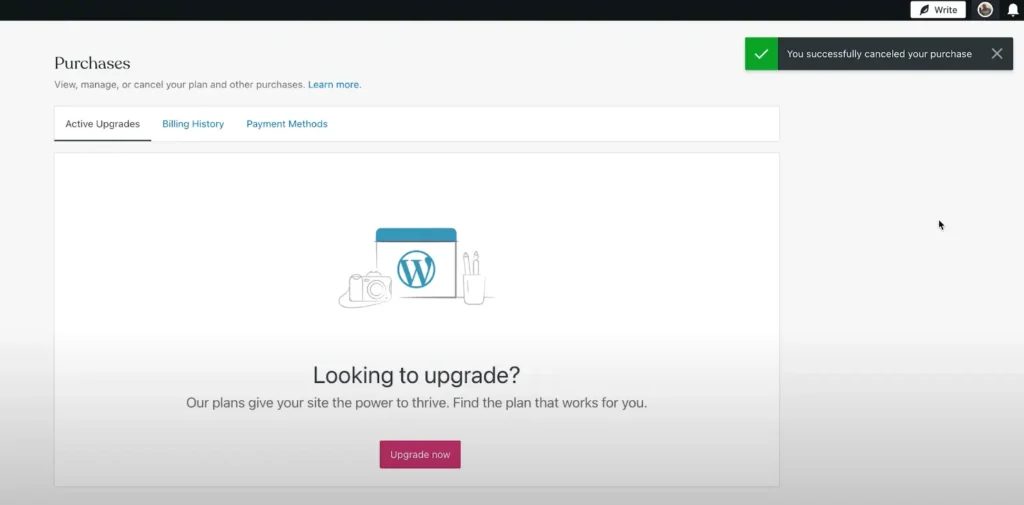
A. Confirmation Email
- Receipt of Confirmation: Shortly after canceling your subscription on WordPress, an email confirmation should arrive with pertinent details such as cancellation date and refund information.
B. Immediate Account Changes
- Loss of Access to Premium Features: As soon as your subscription is canceled, its premium features and services such as custom domains, premium themes and advanced plugins will no longer be accessible to you.
- Website Remains Online: Your website will remain accessible to visitors, though its features will revert back to those available to free WordPress users – this could mean losing some customizations or functionalities that were once unique or customized for you.
C. Access to Your Content
- Content Remains: Your website’s content, including blog posts, pages, media, and comments, will remain intact after cancellation. WordPress typically does not delete your content upon subscription cancellation.
- Editing and Managing Content: You can still log in to your WordPress account and access the content management features. However, you may not have access to certain premium content management tools.
D. Potential Refund (If Applicable)
- Refund Policy: Depending on WordPress’s refund policy and the specific terms of your subscription, you may be eligible for a refund if you canceled within a certain time frame. Review your confirmation email for details on refunds, if applicable.
E. Data Retention
- Data Retention Policies: WordPress often retains your website data for a specific period after cancellation, in case you decide to re-subscribe or recover your content. The duration may vary, so it’s essential to check WordPress’s data retention policies for precise information.
Understanding what occurs after cancelling will enable you to set reasonable expectations and prepare accordingly. While specifics will depend on your subscription type and any individual terms or policies associated with your WordPress plan, it’s wise to save your confirmation email as a form of protection as part of this post-cancellation phase.
Alternatives to Cancellation
Canceling your WordPress subscription is a significant decision. Therefore, it’s important to explore alternatives before making a final choice. Depending on your needs and circumstances, there are several alternatives to consider:
A. Downgrading Your Subscription
- Evaluate Your Needs: If the primary factor driving your consideration of cancellation is cost, consider whether downgrading to a lower-tier subscription might meet your requirements. WordPress typically offers different plans with differing features and price points.
- Review Feature Differences: Understand the feature differences between your current subscription and the one you’re considering. Ensure that the downgraded plan still aligns with your website’s goals.
- Update Your Subscription: Changing subscription settings If you decide to downgrade, log into your WordPress account and update its subscription settings accordingly. Typically this involves changing to a lower tier subscription plan.
B. Free Plan Alternatives
- Explore Free Plans: WordPress often offers a free plan option with basic features. If the premium features no longer meet your needs, switch over to this plan for basic online presence management.
- Limitations to Consider: Be aware of the limitations of the free plan, such as the use of a subdomain (e.g., yoursite.wordpress.com), fewer customization options, and limited plugin support. Ensure these limitations won’t hinder your website’s functionality.
- Transition Your Content: If you switch to a free plan, your content will remain intact, but you may need to adjust your website’s design and features to fit the restrictions of the free plan.
C. Seeking Assistance
- Contact WordPress Support: If you are having any difficulties with your subscription, WordPress customer support could provide solutions and offer alternatives not previously considered.
- Discuss Your Needs: Explain your reasons for considering cancellation to the support team. They may provide guidance on how to make the most of your current subscription or suggest alternatives that better suit your needs.
- Custom Solutions: WordPress support often provides tailored solutions tailored to each unique situation, potentially enabling you to maintain certain features while decreasing costs and subscribing only as necessary.
Before cancelling, it is important to thoroughly explore alternative options to see if they better align with your goals and financial situation. Keep in mind that WordPress is designed to be flexible, and there are often multiple ways to achieve your desired website setup.
Tips for a Smooth Cancellation
Cancelling your WordPress subscription is an important step. Navigate the process smoothly to avoid complications or data loss. Use these tips for a seamless cancellation experience:
A. Keep Records
- Save Confirmation Emails: Throughout the cancellation process, make sure to save all confirmation emails and notifications you receive from WordPress. These emails serve as important documentation of your cancellation request and any refund details.
- Record Important Dates: Note the date when you initiated the cancellation. This date may be important if you need to refer back to your cancellation or refund timeline.
B. Update Your Website DNS (If Necessary)
- Domain Name System (DNS): If you registered a custom domain through WordPress and decide to cancel your subscription, you may need to update your DNS settings to ensure your domain remains functional. This is especially important if you plan to redirect your domain elsewhere.
- Consult Domain Registrar: Contact your domain registrar or hosting provider for guidance on how to update your DNS settings. They can provide specific instructions to ensure your domain remains accessible.
C. Redirecting Your Domain (If Applicable)
- Domain Redirection: If you’ve decided to use a different hosting platform or website builder, you may want to redirect your custom domain to the new website. This ensures that visitors who enter your domain in their browsers are directed to your new site.
- Contact Your New Hosting Provider: When you’ve chosen a new hosting provider or website builder, contact their support or follow their instructions to set up domain redirection. This process typically involves updating DNS records.
D. Monitor Billing After Cancellation
- Review Billing Statements: After canceling your WordPress subscription, keep a close eye on your billing statements or payment method for any unexpected charges. Ensure that your subscription has been fully terminated and that you are no longer being billed.
- Contact Support for Billing Issues: If you encounter any billing-related issues or discrepancies, promptly reach out to WordPress customer support to resolve them.
- Update Payment Information: If you canceled your subscription due to issues with your payment method, update your payment information to prevent any service disruptions or future billing problems.
By following these tips, you can ensure a smooth and trouble-free cancellation process. Keeping records, managing your domain effectively, and staying vigilant about billing matters will help you transition away from your WordPress subscription with confidence.
Conclusion
Canceling your WordPress subscription is a significant decision that can have far-reaching implications for your online presence. We’ve provided you with the necessary steps to navigate the process effectively. Before proceeding, review your subscription details, back up your website, and consider alternatives.
During cancellation, double-check your decision and provide feedback if desired. We’ve also explored alternatives to cancellation and offered tips to ensure a smooth experience. By following our guide, you can be well-prepared for the next steps in your online journey.
Additional Resources and FAQs
Read more
1. How to Uninstall WordPress from cPanel
If you have made up your mind to part ways with your WordPress installation and wish to remove it from your hosting environment, this step-by-step guide will assist you in uninstalling WordPress from cPanel. Whether you are switching to a different platform or starting anew, this article provides clear instructions to assist you in uninstalling WordPress and its associated files with ease.
2. Can ChatGPT Create a Website? Create a website using ChatGPT
As AI technology continues to advance, you might wonder if AI, like ChatGPT, can assist in creating a website. This article explores the capabilities of ChatGPT and demonstrates how it can be used in the website creation process. Discover the potential of AI-powered content generation and its role in web development in this insightful article.
Additional Resources
Here are some additional resources you can refer to for more information and assistance with canceling your WordPress subscription:
- Official WordPress Support: Visit the official WordPress support website for detailed guides, FAQs, and direct assistance from the WordPress team. WordPress Support
- WordPress Community Forums: Join the WordPress community forums to connect with other users who may have faced similar situations. You can often find valuable advice and solutions from experienced WordPress users. WordPress Community
- WordPress Blog: Stay updated with the latest news and tips related to WordPress on their official blog. WordPress Blog
Frequently Asked Questions (FAQs)
1. Can I cancel my WordPress subscription at any time?
Yes, in most cases, you can cancel your WordPress subscription at any time. However, be aware of any terms and conditions associated with your specific subscription type, such as cancellation fees or refund policies.
2. Will I lose my website content after canceling my subscription?
No, your website content, including blog posts, pages, media, and comments, should remain intact after canceling your subscription. WordPress typically retains your content even after cancellation.
3. How long does it take for a cancellation to take effect?
The time it takes for your cancellation to take effect may vary depending on the platform and the terms of your subscription. In some cases, it can be immediate, while in others, it might take until the end of your billing cycle.
4. Can I get a refund after canceling my WordPress subscription?
Refund policies vary based on your subscription type and the timing of your cancellation. Some subscriptions offer a refund if canceled within a specific period. Review your confirmation email and WordPress’s refund policy for details.
5. Can I transfer my domain to another registrar after canceling my WordPress subscription?
Yes, you can typically transfer your domain to another registrar or hosting provider after canceling your WordPress subscription. Contact your new registrar for instructions on how to initiate the transfer.
6. What should I do if I encounter issues during the cancellation process?
If you encounter issues during the cancellation process, such as technical difficulties or billing problems, reach out to WordPress support for assistance. They can help troubleshoot and guide you through the process.
Remember that specific details and policies may change over time, so it’s always a good idea to refer to the most current information provided by WordPress or consult their official support channels for the most up-to-date guidance.

